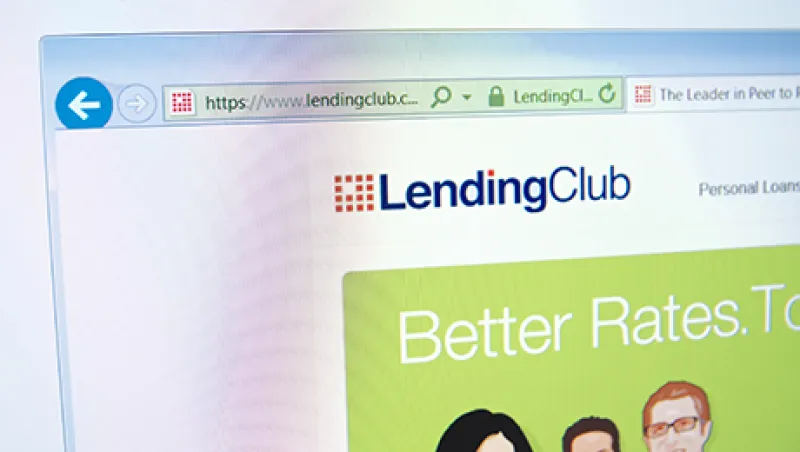It has been a rough few weeks for Lending Club — the biggest and one of the best-known players in the growing marketplace lending industry — amid allegations of loan falsifications and founder and CEO Renaud Laplanche’s alleged failure to properly disclose personal interests in an outside fund. Laplanche and several other senior managers left the San Francisco–based company over the incidents in early May, but the timing could be precarious for the industry as a whole.
As the drama continues to unfold at Lending Club, experts and participants in marketplace lending are preparing for a new wave of regulations that many believe will lead to new rules and eventual consolidation. Marketplace lending, also often referred to as peer-to-peer lending or crowdlending, grew up in the wake of the financial crisis to fill a gap in lending to individuals and small businesses online. Marketplace lenders such as Lending Club, Prosper Marketplace, Funding Circle and dozens of smaller rivals aim to remove the traditional middleman from lending transactions, getting loans approved and disbursed quickly and with few restrictions.
In practice, the marketplaces match borrowers with investors that can make loans online. The industry’s originations grew from zero to $37 billion in the past few years, according to Autonomous Research. One lender, Los Angeles–headquartered iBorrow, says its average loan size has jumped from $1 million to $6 million in the past decade, and even more growth is expected, thanks in large part to greater demand for fast online lending. The company changed its name earlier this year, from Eagle Group Finance, to reflect a new, more efficient approach.
The majority of marketplace lending is unsecured, causing concern among investors and regulators, especially considering the industry’s recent growth. On May 10 the U.S. Treasury Department released a white paper detailing what it views as the “opportunities and challenges” in online marketplace lending, and the Consumer Financial Protection Bureau is reportedly planning to consider the largest marketplace lenders to be similar to banks for its own regulatory purposes as early as 2017. The biggest concerns appear to be protections for small-business borrowers and increased transparency for both borrowers and investors. Any changes are expected to increase the cost of doing business for online direct lenders, but where and how exactly those costs will be incurred remain a major question.
“One of the things regulation absolutely does is legitimize what you are doing,” says Harlan Peltz, founder and co-chair of iBorrow, which focuses on commercial real estate loans. But not everyone in the sector is doing the same thing. Lending Club facilitates personal, business and medical loans, and Prosper focuses on small personal and business loans, as well as debt consolidation. With so many permutations, questions abound about how any regulatory body will be able to implement effective rules. The needs, and potential pitfalls, for each company necessarily differ.
“What will ultimately happen is, it will come down to standardized documentation,” says Richard Morris, a corporate finance partner with law firm Herrick Feinstein in New York. “At some point there’s going to be a template for these types of loans.” The question that will need to be answered over the next few years is whose version of documentation, and which provisions, will prevail.
Morris believes the outcome may look much like Department of Housing and Urban Development mortgage disclosure documents but tailored for consumer finance. When asked, many industry veterans say they are likely already playing by any new rules that may be implemented. Peltz believes that when it comes time to standardize practices, iBorrow will be in a good position because all of its loans are supported by commercial properties, a type of collateral that many marketplace lenders cannot boast. This is Lending Club’s level of confidence as well. “Lending Club operates within the existing regulatory framework and our borrowers benefit from the same regulatory protections as bank borrowers,” the bank said in an emailed statement.
Last week news broke that Lending Club may also soon have help from Citigroup, which is said to be in talks about financing future loans. The two formed a separate partnership late last year through which Citigroup is expected to buy loans from Lending Club to help it meet certain community lending requirements. Haskell Garfinkel, co-leader of PricewaterhouseCoopers’s financial technology practice, points to Citigroup’s apparent confidence in Lending Club and investment fund Blue Elephant Capital Management’s recent decision to resume purchasing loans from Lending Club rival Prosper as evidence that the industry may be down but not out. “Marketplace lending is undergoing growing pains that are not atypical of nascent industries experiencing intense growth,” Garfinkel says.
The marketplace lending industry has attempted to get out ahead of new rules. Lending Club, Prosper and Funding Circle recently formed a lobbying group known as the Marketplace Lending Association. They released their own set of industry standards, including investor disclosure rules for both accredited and nonaccredited investors, as well as liquidity and business continuity guidelines.
But even if existing firms can comply with whatever new rules regulators throw their way, the sector is likely to undergo significant structural change in the near future.
“The industry has spoken of consolidation for years, and in the face of additional regulations and the costs they imply, smaller players will likely have to merge with others in the industry in order to mitigate these expenses and compete against the larger platforms,” says PwC’s Garfinkel.
Follow Kaitlin Ugolik on Twitter at @kaitlinugolik.






